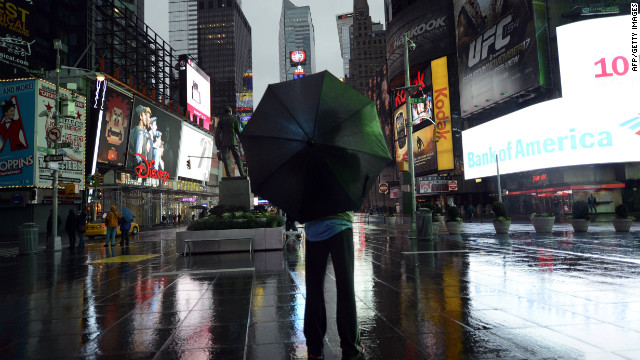Most pundits believe Apple’s 7-inch tablet, the iPad Mini, will see light of day on
Oct 17.
Now with the date fast approaching, they’ve switched gears to guessing
when the event invites will go out (most think Oct. 10th).
I have some iPad Mini predictions of my own, but not the ones you may think.
The tiny tablet — which
Apple has never officially acknowledged — will be less of everything. It will be the
iPad Retina’s stunted little brother.
It will offer less screen real estate than the 9.7-inch iPad and
fewer overall pixels (though it is sure to be another retina-resolution
display).
It will be a consumption device. The full-sized iPad has always been
both consumption and creation. People write stories, build
presentations, make music, and create artwork on the big iPad (along
with reading, browsing the web and watching movies).
The iPad Mini will be about reading books, browsing the Web,
listening to music, watching movies. It will support many, but not all,
of the iPad’s apps, but will not have the same horsepower.
I fully expect the iPad Mini to run the Apple A5 chip (instead of the more
powerful A6) chip and top out 32GB of storage. It’ll probably feature a half gigabyte of memory (RAM).
It’ll have an accelerometer and gyroscope, but probably not a magnetometer. More importantly, it won’t have GPS or 3G.
7-inch devices are usually for the home and its ever-present wi-fi,
or used where there’s Wi-Fi available (maybe even tethered to a device
such as the
iPhone 5).
Many people download and consume books, movies and music while the
7-inch devices are offline (airplane use is a good example, though more
people are starting to
GoGo those devices, too).
Less = More
Despite all this, the iPad Mini will be a perfect example of “less is
more.” By managing all the parts and capabilities, Apple will finally
be able to offer a $199 tablet. As
I’ve said before, the Cupertino tech giant has to offer a sub $200 tablet to remain competitive — at least in the 7-inch tablet space.
That space is now crammed full of worthy competing devices from Amazon, Barnes and Noble and Google. The
Kindle Fire HD,
Barnes & Noble Nook HD and
Google Nexus 7 are strong entrants that benefit from solid, growing and, in the case of Amazon, well-established ecosystems.
This is the competitive landscape I thought the iPad would face in
early 2011, but has finally arrived in 2012, albeit in a form factor I
thought consumers didn’t want.
Steve Jobs thought the same thing; he was adamantly against a mid-sized iPad. Current Apple CEO Tim Cook
venerates Job’s memory,
but that doesn’t mean he won’t go his own way: “Steve taught us to not
focus on the past,” said Cook earlier this year, “Be future-focused.”
I think it’s now safe to say the future of tablets includes 7-inch devices.
A Nice Museum
So, now that we all agree that the iPad Mini is coming, that it will
likely launch this month and that it will truly be a subset of the
full-sized iPad, let’s talk about how Apple will unveil it.
Apple will launch the iPad in New York City … at the Guggenheim museum.
Now bear with me here: There is some logic to this odd idea.
At the beginning of 2012, Apple launched iBooks 2 and textbooks (and other digital tomes) built with the brand new
iBooks Author.
It was an unusual event, focused almost solely on software and content,
though Apple demonstrated the new digital books on the iPad 2 and the
authoring software on some large-screen iMacs.
I liked
the ease of use and how beautiful the finished books looked on the
iPad. It reminded me of what I sometimes miss when I read books and
magazines on an e-ink-based Kindle.
Wouldn’t it make sense for Apple to unveil the device so perfectly
designed for consuming those digital books in the very same venue?
Indeed it would. There’s also the fact that Apple has almost never done
two major hardware product roll-outs with two full-scale events in less
than two months.
Part of the reason Apple might not do two large-scale West Coast
events in less than 60 days: it is somewhat sensitive to what media
outlets have to shell out to fly staffers to these events. A lot of tech
media happens to reside in NY.
There’s also the simple fact that having a big event for a product
that is a lesser version of its big brother will seem somewhat
anticlimactic.
I just don’t see Apple gearing up for another major event so soon
after the iPhone 5 and iPod update rollouts. Apple is also busy dealing
the largest PR kerfuffle of Tim Cook’s administration:
AppleMapsGate. Celebrating while the company licks its wounds just doesn’t seem right.
A smaller event run by content guy
Eddie Cue,
Apple’s senior vice president of Internet Software and Services, will
likely focus more on the special content ecosystem designed just for the
iPad Mini — with less oohing and aahing about the hardware.
That could avoid the impression that Cook and his key lieutenants are not focused on resolving the iPhone 5′s biggest issue.
I could be wrong, of course. There might not even be an iPad Mini.
But all the signs tell me there is, and that this launch will be
fundamentally different from its predecessors.









